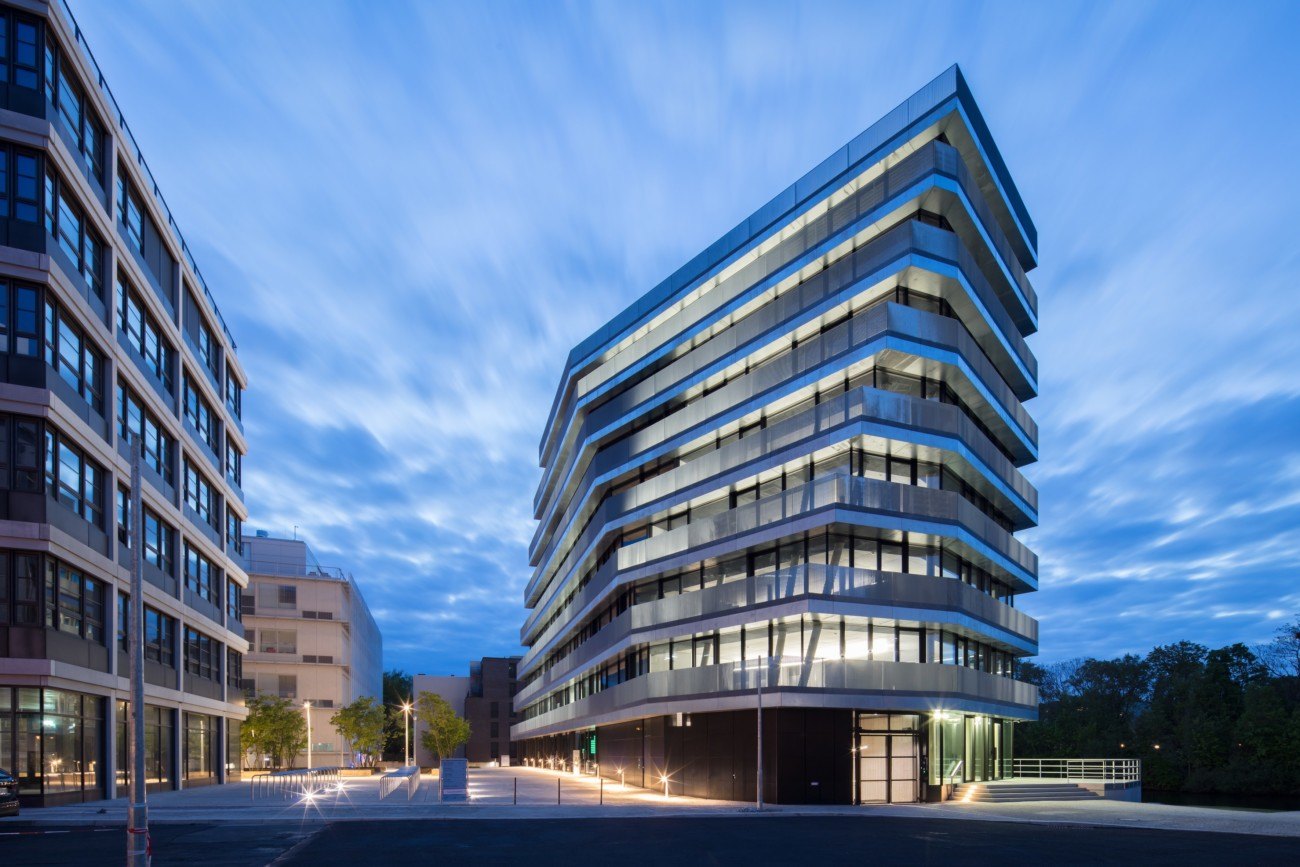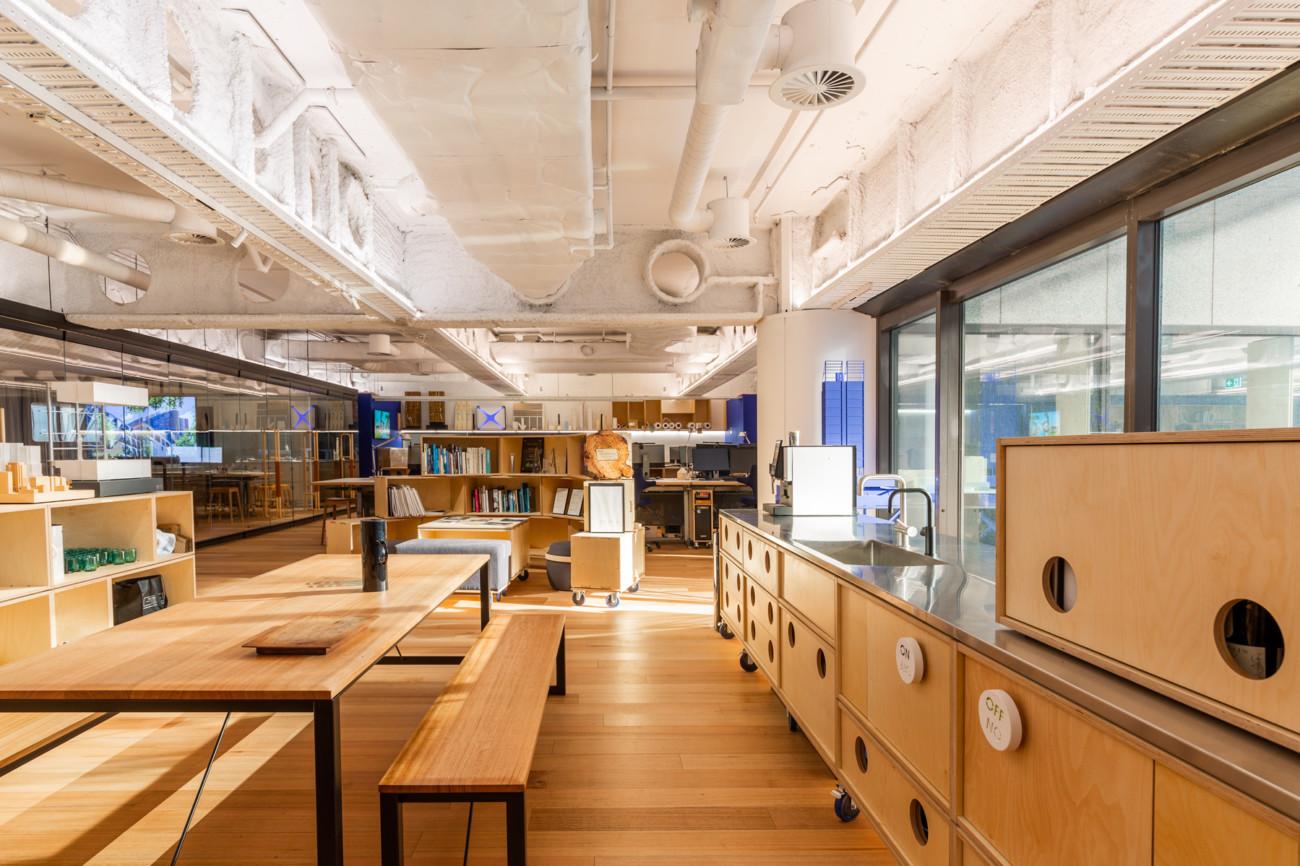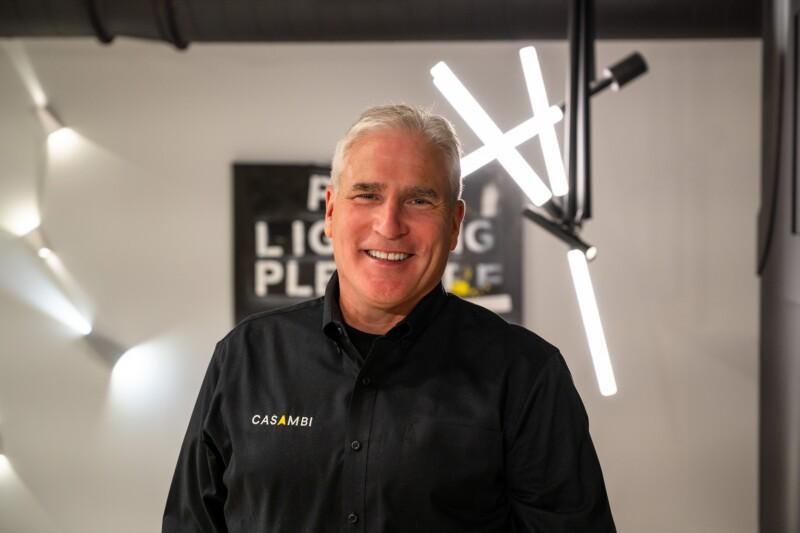Lighting control as a design tool for modern workspaces

Wireless, smart lighting control is a fantastic design tool for office spaces, here’s why:
Offices are not what they used to be. The traditional model of one desk per employee is undergoing a radical transformation. With office occupancy rates in Europe hovering at 55%, down from the pre-pandemic level of 70%, a departure from the norm is not just prudent; it’s essential. The focus is now shifting towards better space utilization, creating experiential and collaborative spaces, fostering innovation and adapting to the evolving needs of the workforce. This transformation is not just a response to the global pandemic but also a proactive move to future-proof office spaces.
Almost half of the corporate real estate executives recently surveyed by CBRE are gearing up to futureproof their portfolios in the next three years, with 64% aiming to expand into ESG-certified buildings. The demand for refined workplaces is evidently escalating, with 48% embracing flexible seating, a figure anticipated by CBRE to surge to 80% by 2025.
This shift requires a nuanced approach to lighting design, recognizing the multi-functional nature of modern workspaces. Especially so, given that comfortable lighting has emerged as the second most critical factor for employees, closely trailing air quality, according to a study by Future Workplace. However, achieving the right balance between natural and artificial light remains a challenge.
A new way of thinking about lighting controls.
A common obstacle to implementing sophisticated lighting controls in offices is trifold, encompassing the misconception that it is out of budget, an optional add-on – an afterthought – rather than a central element, and is overly complicated. I’d like to take this opportunity to dispel these myths and touch upon the practical benefits and feasibility of integrating advanced lighting controls in modern workspaces.
1. Out of budget?
Contrary to the misconception that integrated smart lighting controls are too expensive for office spaces, the reality paints a different picture. Gone are the days of significant upfront expenditures for specialized hardware in electrical distribution board space. The flexibility of wireless controls allows businesses to start small and scale as required, with no need for additional considerations.
2. An afterthought?
Introducing lighting controls during the initial design phase has the potential to elevate the workspace significantly. Not only does it create a wow factor for guests arriving at the premises, but it also contributes to employee comfort, fostering a positive brand image. By strategically highlighting architectural features and allowing natural light to take the lead, these controls play a pivotal role in shaping the ambiance of the space. Furthermore, their integration allows for a delicate balance between task, accent, and decorative lighting, ensuring a harmonious environment that aligns seamlessly with the natural surroundings. In essence, incorporating lighting controls during the design phase transcends the functional aspects, becoming an integral element in curating a workspace that is not just illuminated but truly inspiring.
3. Complicated?
Busting the misconception that lighting controls are complicated, wireless technology actually eliminates the requirement for extra hardware, specialized “automation” teams, and a convoluted understanding of complex “protocols”. Just introduce a smart fixture, and you’re set to embark on a hassle-free lighting experience. Moreover, seamlessly integrating additional wireless switches and sensors is equally easy, all managed through an intuitive software application. By conceptualizing controls in software, users gain the freedom to tailor their designs —guaranteeing a foolproof experience. This level of simplicity empowers users to effortlessly customize and oversee their lighting environments, ensuring a smooth and personalized lighting control journey.
The business case for integrated lighting control.
1. Justification for the building owner/occupier:
According to a LightingEurope report, approximately 90% of a company’s costs are related to salary and benefits, with only 9% attributed to rental and a mere 1% to energy, making the well-being of occupants a strategic priority – emphasizing the importance of creating a healthy and productive work environment.
When making the case to the individuals responsible for financial decisions, the appeal lies in the multifaceted benefits that wireless controls offer. By allocating a strategic percentage of the budget to controls, building owners and occupiers are making a prudent investment in long-term operational efficiency, better space utilization and energy savings. Reduced reliance on additional hardware, specialized teams, and complex protocols translates to cost savings and streamlined maintenance. This upfront commitment to advanced control solutions promises a substantial return on investment over time, contributing to sustainability goals and enhancing the overall value of the property.
2. The results for the occupants:
Directly impacting the daily lives of occupants, the integration of wireless controls translates into a superior user experience. Tailored lighting environments, easily achievable through intuitive software applications, foster comfort, productivity, and well-being. The flexibility afforded by wireless controls empowers occupants to personalize their surroundings effortlessly, promoting a sense of ownership and satisfaction. Additionally, the adaptability of these controls ensures that the built environment evolves with changing needs, enhancing occupant satisfaction and engagement. Allocating resources towards cutting-edge control solutions not only elevates the quality of the space but also demonstrates a commitment to creating an environment that prioritizes the well-being and productivity of its inhabitants.
Enjoy total freedom to create.
From permanent workstations to collaborative spaces, adaptable lighting control that’s incorporated from the offset will enhance the overall office experience for years to come.

1. Create and emphasize zones.
Creating and emphasizing zones is crucial for optimizing the work environment and maximizing the space utilization. These zones are strategically defined to cater to specific needs, ensuring an efficient use of lighting resources. For example, Zone 1 might focus on permanent workstations, providing ample lux on the work surface. Zone 2 might address hotdesk workstations with a lower targeted lux, supplemented by desk lamps for personalized lighting. In circulation areas (Zone 3), smart controls employing presence and timer functionalities might dim the lighting to conserve energy while providing guidance to visitors in the absence of occupancy. Aligning with the Well Building Standard, this type of approach ensures that light is purposefully distributed where needed, deviating from an even spread across the entire office plane. The rising trend of activity-based working further underscores the significance of tailored environments, recognizing the varied needs of individuals throughout the day.

2. Collaborative spaces and open lounges.
With the ability to customize lighting based on the time of day, designers can enhance the office experience by incorporating brighter ‘white light’ in the morning to stimulate energy levels and transitioning to a warmer yellow light in the afternoon to foster a conducive atmosphere for collaboration. This level of adaptability ensures that the lighting design aligns seamlessly with the dynamic nature of the modern work environment, providing both functional and aesthetic benefits to occupants throughout the day.


3. Open and inclusive workspaces.
With an anticipated 80% of companies embracing flexible seating by 2025, these controls allow for a more refined approach to lighting requirements. Acknowledging age-related differences, where a 60-year-old may require twice the amount of light compared to a 30-year-old, lighting controls offer the flexibility to tailor illumination to individual needs. The integration of natural light, delicately balanced with artificial lighting, ensures a harmonious and well-lit environment. Local control capabilities further empower individuals within the workspace, allowing them to adjust lighting settings according to their preferences, ultimately contributing to a comfortable and adaptable open workspace that enhances both productivity and well-being.


Casambi Ready. Future Ready.
Upsizing, downsizing, relocating, or replacing, the adaptability of technology becomes paramount. The Casambi app offers end clients and facility managers seamless access control to oversee and manage any personnel changes. It offers the freedom to reconfigure zones, deal with fixture replacements, all without incurring specialist call-out fees. Furthermore, for clients seeking to integrate cutting-edge technologies like heat mapping, wayfinding, or room management bookings, Casambi can accommodate them. The Terrace office in Berlin recently achieved an enhanced user experience by seamlessly integrating Casambi with the building’s app, streamlining controls and optimizing lighting and heating based on occupancy.
Integrated lighting controls future-proof spaces, allowing for easy adaptation to changing needs and integrating the latest technologies seamlessly. It contributes to creating environments that enhance health, well-being, and productivity. Embracing wireless lighting controls is not just a technological upgrade; it’s a strategic move toward shaping workspaces that are not only adaptive but also transformative.
If you’re interested in learning more, do check out our whitepaper on Casambi for office lighting projects, or get in touch:



